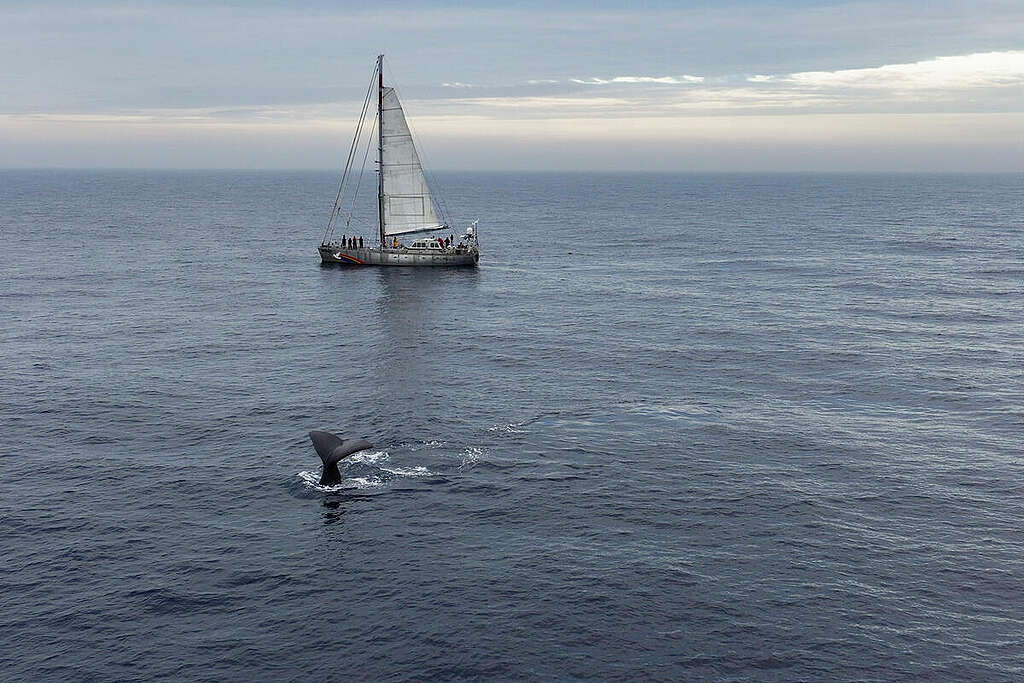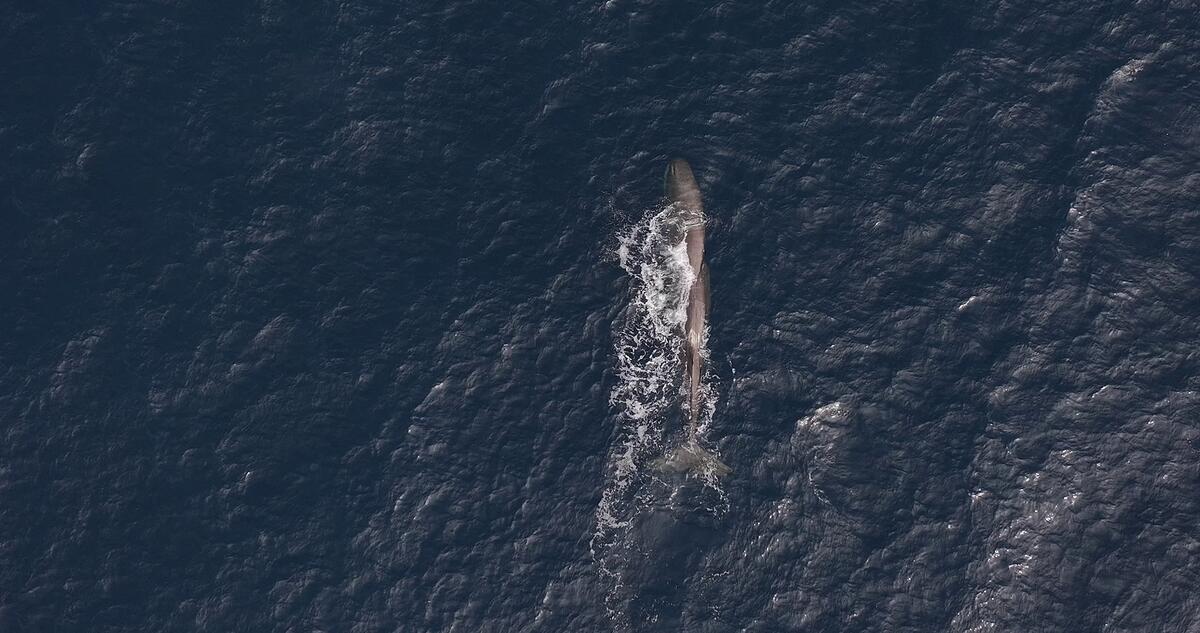In June/July 2025 Greenpeace Nordic and Greenpeace Germany set off on the second science expedition to Norway’s designated deep sea mining area. Prior to that we release a summary report with data from last year’s expedition to the same area. The report shows compelling evidence of the area’s importance as a habitat for several cetacean species, including sperm whales and northern bottlenose whales.

The Greenpeace summary report, “Threatened whales in Norway’s proposed deep sea mining area”, shows the presence of deep-diving and noise-sensitive marine mammals in the designated Arctic mining area. The science expedition – conducted in the summer of 2024 – used both visual and acoustic monitoring to document cetacean activity. This resulted in a high encounter rate of deep-diving whales. In total, six cetacean species were identified, including northern bottlenose whales, white-beaked dolphins, minke whales, killer whales, fin whales and sperm whales.
In short, the report presents a map of the sightings and the main conclusions that can be drawn from the first expedition. This strengthens the argument for cancelling all current mining plans in order to safeguard marine life and preserve the integrity of vulnerable ecosystems. Noise and other forms of pollution from these kinds of mining operations will likely negatively impact cetaceans.
Greenpeace’s research adds to the mounting evidence against deep sea mining at a time of crucial importance for the oceans and the biodiversity of the deep seas and highlights the urgent need for action from world leaders to protect these fragile and underexplored ecosystems.



